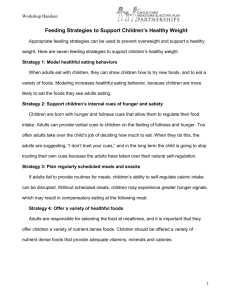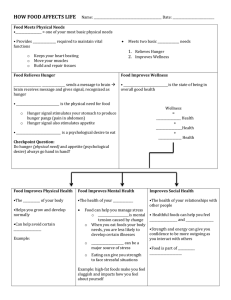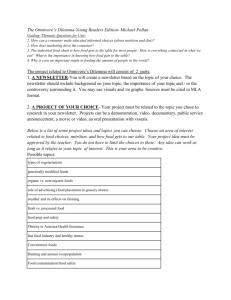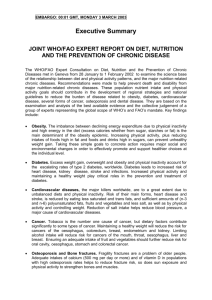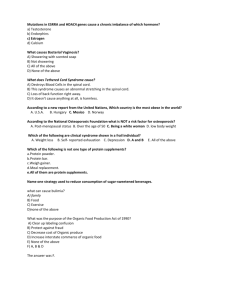Summary Sheet for Trainers
advertisement
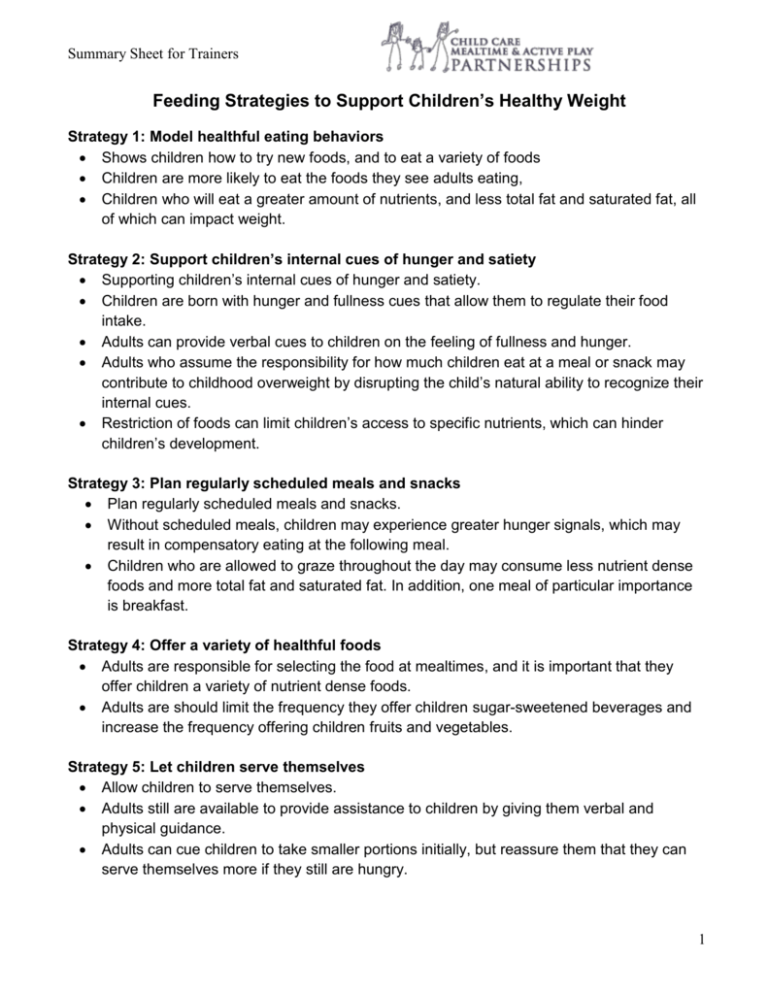
Summary Sheet for Trainers Feeding Strategies to Support Children’s Healthy Weight Strategy 1: Model healthful eating behaviors Shows children how to try new foods, and to eat a variety of foods Children are more likely to eat the foods they see adults eating, Children who will eat a greater amount of nutrients, and less total fat and saturated fat, all of which can impact weight. Strategy 2: Support children’s internal cues of hunger and satiety Supporting children’s internal cues of hunger and satiety. Children are born with hunger and fullness cues that allow them to regulate their food intake. Adults can provide verbal cues to children on the feeling of fullness and hunger. Adults who assume the responsibility for how much children eat at a meal or snack may contribute to childhood overweight by disrupting the child’s natural ability to recognize their internal cues. Restriction of foods can limit children’s access to specific nutrients, which can hinder children’s development. Strategy 3: Plan regularly scheduled meals and snacks Plan regularly scheduled meals and snacks. Without scheduled meals, children may experience greater hunger signals, which may result in compensatory eating at the following meal. Children who are allowed to graze throughout the day may consume less nutrient dense foods and more total fat and saturated fat. In addition, one meal of particular importance is breakfast. Strategy 4: Offer a variety of healthful foods Adults are responsible for selecting the food at mealtimes, and it is important that they offer children a variety of nutrient dense foods. Adults are should limit the frequency they offer children sugar-sweetened beverages and increase the frequency offering children fruits and vegetables. Strategy 5: Let children serve themselves Allow children to serve themselves. Adults still are available to provide assistance to children by giving them verbal and physical guidance. Adults can cue children to take smaller portions initially, but reassure them that they can serve themselves more if they still are hungry. 1 Summary Sheet for Trainers Strategy 6: Supportive Environment A pleasant mealtime environment fosters children’s ability to self-regulate intake, encourages a variety of foods, and promotes communication and interaction between children and the adults. Ensure the mealtime environment is pleasant is accomplished by establishing a positive physical, auditory, and social environment. Televisions can be distracting to the adult and children, and deter mealtime conversations and children’s interest in the food. Strategy 7: Avoid rewarding or consoling with food When adults consistently reward and console children with food, they are creating a food habit that may last the child’s lifetime. Rewarding with food elevates the preference for that food. Rewarding and consoling with food along with other manipulative feeding strategies to persuade children to eat more, eat less, or to behave in a specific way, hinders children’s ability to self regulate intake of food. 1. Moag-Stahlberg, A., Miles, A., & Marcello, M. (2003). What kids say they do and what parents think kids are doing. Journal of the American Dietetic Association, 11, 1541-1546. 2. Satter, E. (1987). How to get your kid to eat but not too much. Boulder, CO: Bull Publishing Company. 3. Johnson, S. L. (2000). Improving preschoolers’ self-regulation of energy intake. Pediatrics, 106, 1429-1435. 4. Sigman-Grant, M., Christiansen, E., Fernandez, G., Fletcher, J., Johnson, S.L., Branen, L.J., & Price, B. (2008). Hungry Mondays: Low-income children in child care. Hunger & Environmental Nutrition, 2, 19-38. 5. Fisher, J.O., Liu, Y., Birch, L.L., & Rolls, B.J. (2007). Effects of portion size and energy density on young children’s intake at a meal. American Journal of Clinical Nutrition, 86, 174-179. 6. Fisher, J.O. & Birch, L.L (1999). Restricting access to palatable foods affects children's behavioral response, food selection, and intake. American Journal of Clinical Nutrition, 69,1264–1272. 7. Dennison, B.A., Erb, T.A., & Jenkins, P.L. (2002). Television viewing and television in bedroom associated with overweight risk among low-income preschool children. Pediatrics, 109, 1028 – 1035. 8. Weight Relativities Division of the Society for Nutrition Education. (2003). Guidelines for childhood obesity prevention programs: Promoting healthy weight in children. Journal of the Nutrition Education and Behavior, 35, January-February. 9. Barlow, S.E., & Dietz, W. H. (1998). Obesity evaluation and treatment: Expert committee recommendations. Pediatrics, 102, 1-11. 10. Wardle, J., Carnell, S., Haworth, C. M. A, & Plomin, R. (2008). Evidence for a strong genetic influence on childhood adiposity despite the force of the obesogenic environment. American Journal of Clinical Nutrition, 87, 398-404. 11. Rampersaud, G. C., Pereira, M. A., Girard, B. L., Adams, J., & Metzl, J. D. (2005). Breakfast habits, nutritional status, body weight, and academic performance in children and adolescents. Journal of the American Dietetic Association, 105, 743760. 2
